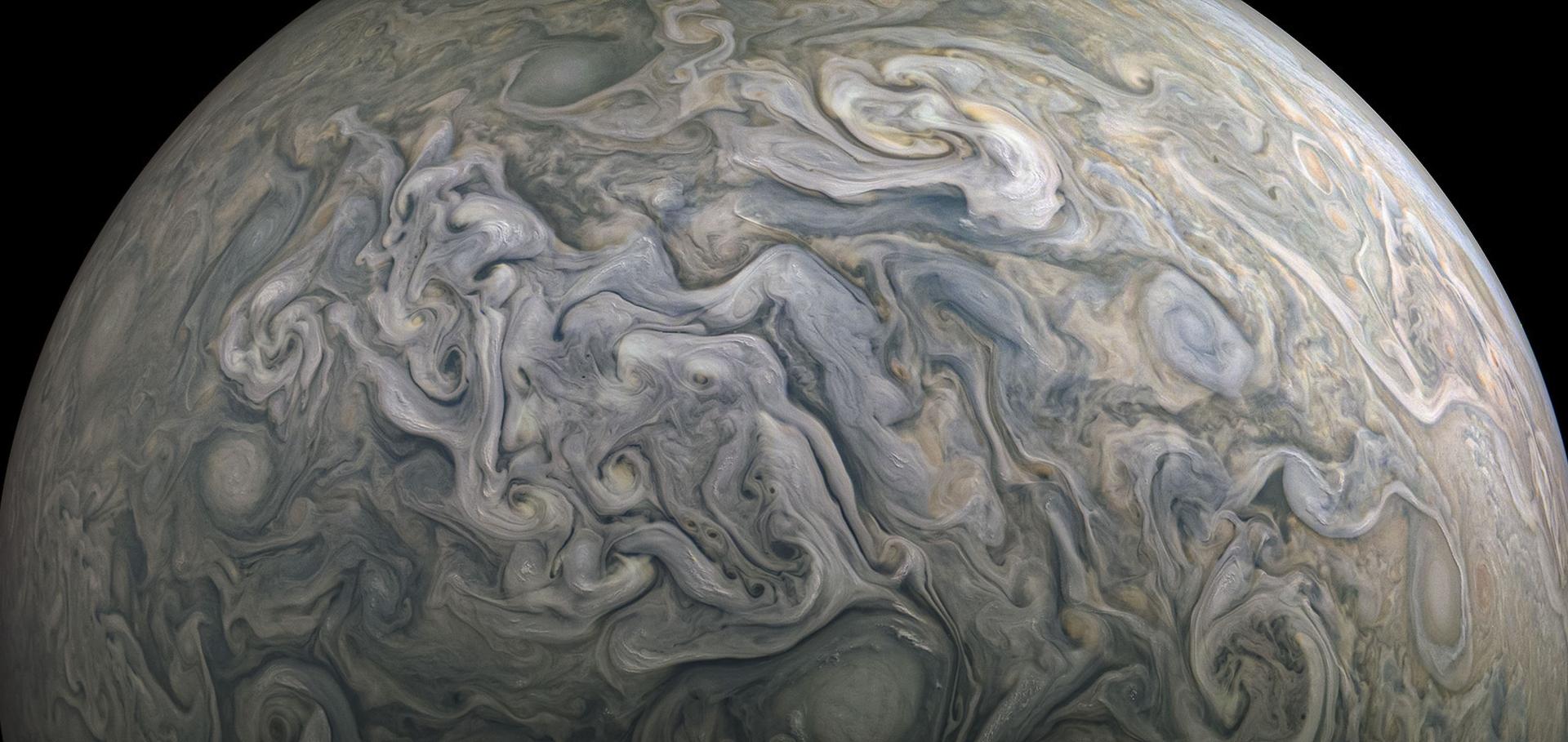Experimental dataset of sandwiched baroclinic flows over a bottom conical plate
University of Oxford (2025)
Abstract:
This dataset comprises time-resolved, two-component horizontal velocity fields from experiments in a rotating, differentially heated fluid annulus. The experiments were conducted at the GFDLab, University of Oxford.Predicting internal boundary layer growth following a roughness change in thermally neutral and stable boundary layers
Journal of Fluid Mechanics Cambridge University Press 1016 (2025) R4
Characterising turbulent cascades and zonal jet formation processes from observations of cloud level winds on Jupiter and Saturn
Copernicus Publications (2025)
Abstract:
Recent analyses of wind measurements obtained from tracking cloud motions in spacecraft images of Jupiter and Saturn[1,2] indicate that nonlinear scale-to-scale transfers of kinetic energy act from small to large scales over a wide range of length scales, much as anticipated for 2D or geostrophic turbulence paradigms. At the smallest resolvable scales, however, there is evidence in observations of a forward (downscale) transfer, at least at low and middle latitudes on Jupiter, much like in the Earth’s atmosphere. Moreover, the upscale transfers at the largest spatial scales are evidently dominated by spectrally non-local, highly anisotropic eddy-zonal interactions associated with the generation of intense zonal jets and equatorial super-rotation by direct eddy-zonal flow exchanges. Most analyses to date have emphasised the global mean interactions for both planets, thereby focusing on the spatially homogeneous and isotropic components of the turbulence. Here we present some new analyses of spectral energy transfers on both Jupiter and Saturn that resolve variations in latitude[cf 3], thereby shedding new light on non-homogeneous aspects of jovian turbulent interactions. The results indicate significant variability and inhomogeneity between different locations, with a clear distinction between the tropics, the extratropical middle latitudes and the polar regions. We discuss these in light of other observations and models of gas giant circulation and related laboratory experimental analogues.[1] Antu˜nano, A., del Río-Gaztelurrutia, T., Sánchez-Lavega, A., & Hueso, R. (2015) Dynamics of Saturn’s polar regions. J. Geophys. Res.: Planets, 120 , 155–176. doi:10.1002/2014JE004709[2] Read, P. L., Antu˜nano, A., Cabanes, S., Colyer, G., del Río-Gaztelurrutia, T., Sánchez-Lavega, A. (2022). Energy exchanges in Saturn’s polar regions fromCassini observations: Eddy-zonal flow interactions. J. Geophys. Res., 127 , e2021JE006973. https://doi.org/10.1029/2021JE006973[3] Chemke, R., & Kaspi, Y. (2015). The latitudinal dependence of atmospheric jet scales and macroturbulent energy cascades. J. Atmos. Sci., 72 , 3891–3907. doi: 10.1175/JAS-D-15-0007.Turbulence statistics estimation across a step change in roughness via interpretable network-based modelling
Measurement Science and Technology IOP Publishing 36:1 (2024) 016026
Abstract:
This study proposes a data-driven methodology to complement existing time-series measurement tools for turbulent flows. Specifically, a cluster-based transition network model is employed for the estimation of velocity time traces and their corresponding statistics. The method is tested on a laboratory-modelled turbulent boundary layer over a step change in surface roughness, where velocity time series are recorded for training and validation purposes via Laser Doppler Anemometry. Results show that our approach can estimate velocity and momentum flux statistics within experimental uncertainty over a rough surface through an unsupervised approach, and across the step change in roughness through a semi-supervised variant. The friction velocity across the domain is also estimated with 10% relative error compared to the measured value. The proposed methodology is interpretable and robust against the main methodological parameters. A reliable data-driven framework is hence provided that can be integrated within existing laboratory setups to supplement or partially replace measurement systems, as well as to reduce wind tunnel running times.Statistical properties of neutrally and stably stratified boundary layers in response to an abrupt change in surface roughness
Journal of Fluid Mechanics Cambridge University Press (CUP) 986 (2024) A4


